The Harem in Arabic is called “haram,” which means “forbidden.” Only the owners of the palace, called Sultan, and their sons are allowed to set foot in this area.
But for everyone else, the Harem is an extremely strict forbidden area. The strict prohibition is even recorded by a Turkish historian named Dursun Bay: “If the sun were male, it would be forbidden to shine into the Harem” (In Turkish beliefs, the sun is a female entity).
Hierarchy in the Muslim Harem
In the Harem of Muslims, there is also a strict hierarchical system, and each level has its own name. The highest power in the Harem belongs to the Sultan’s mother, known as Walid. The second level is for the seven principal wives of the Sultan, among them, the Queen is called Kadin. Below them are the Gediklik – the favored concubines of the Sultan, and the rest are called thị nữ or Odalik.
In addition, there are some girls specially favored by the Sultan with exclusive privileges, unofficially known as Iqbal. These women are like small mistresses of the Sultan. They receive allowances, live in separate rooms, and have their personal servants. They are beautiful “offerings” presented to the Sultan by the courtiers. In Turkish society of the past, many courtiers attained status and favor from the Sultan through these Iqbal.

Religiously, Prophet Mohammed allowed men to have no more than four wives to minimize polygamy. However, Turkish Sultans began a race to select multiple concubines from the time of the Caliphate when Muslims began to see a man having many beautiful wives as a measure of wealth and power. The largest Harem in Muslim history was the Harem Dar-ul-Seadet, which had over 1,000 concubines, including foreign women given to the Sultan as offerings.
Unlike concubines in Chinese Imperial palaces, the women in the Turkish Harem were skilled in politics and played an important role in the ruler’s decisions, but their role was often hidden to avoid the curious eyes of others. Nevertheless, depending on the Sultan’s special favor, their talents could sometimes become renowned.
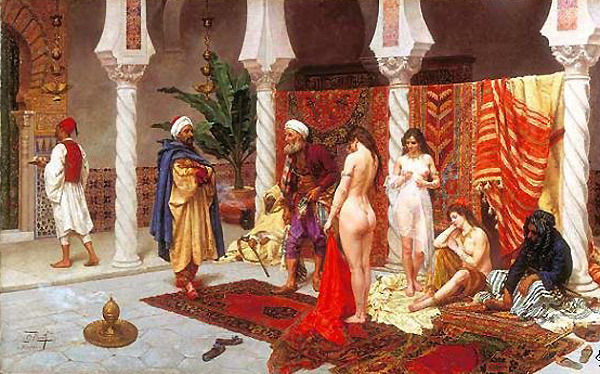
Selection of Concubines
In many other aspects, stepping into a Harem was similar to becoming a nun, where they devoted their minds to serve their master. Wives and concubines had to sever all ties with the outside world, given new names, and learned to live obediently. They would live and die there from then on.
The beautiful girls from all over the country were chosen to be presented to the Sultan, usually at the age of 13, when they had begun to show the beauty of young women to attract the Sultan’s attention. Those more attractive upon entering the Harem would be called Gezde, meaning “with potential.”
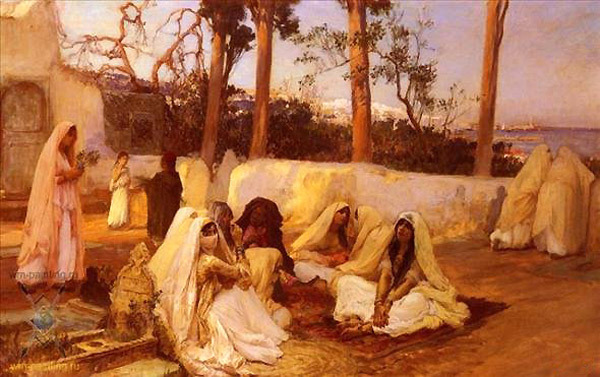
During the Ottoman Empire, which lasted from the 11th century to the early 20th century and reached its peak of power in the 16th and 17th centuries, the Harem in Turkey was called Serail. The concubines serving the Sultan (Emperor) were often purchased from slave markets. However, only virgins were worthy of entering this place. To enter the Ottoman palace, a female slave had to pass a virginity test by being forced to kiss a Muslim man.
The Sultan could also receive beautiful virgins as a gift as a sign of respect. For example, the ruler of Algeria, Mohammed bin Osman, offered Sultan Selim III a French woman named Emma de Beauharnais. This was the cousin of Napoleon Bonaparte’s wife, who was kidnapped by pirates.
Within the Harem, they regularly learned to dance, music, Islamic poetry, and other art forms. All of Sultan’s concubines, regardless of their origin, had to convert to Islam upon entering the Harem. After reciting the phrase “There is no God but Allah and Mohammed is his prophet” three times, they became “slaves” with their lives bound to their Sultan and had to forget their previous lives and adopt new names and responsibilities.
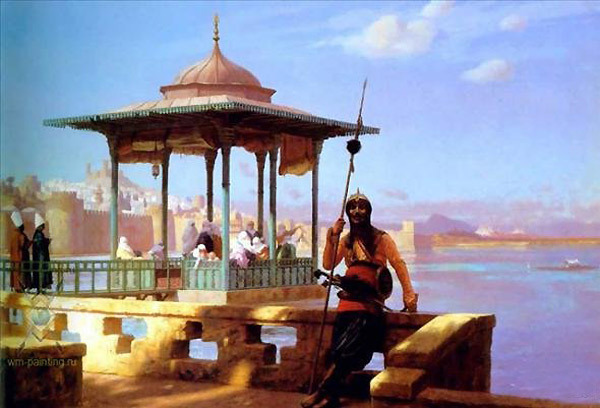
At the lowest level were the Odalik – those who performed roles similar to slaves, but they still dreamt of becoming one of the official wives. Among the Odalik, many were from noble backgrounds. They were taught to stand out in the crowd with a wink or a gesture of speech.
However, achieving the rank of Kadin was not impossible. It all depended on their talent. To climb the ladder of power in the hierarchical system of the Harem, they needed not only beauty but also intelligence, determination, and wisdom because there were thousands of beautiful women in the Harem, and without something special, the Sultan would not notice them.

Hidden Rivalry within the Dark Share
Competition is the same everywhere. The Harem of Muslims is no exception. Women compete fiercely and use any means possible to win. Western novelists have exaggerated the role of poisons and daggers in the Turkish Harem.
The Sultan had a separate ranking for all his women, and it could change at any time depending on his mood. The only hope for a concubine to become a Kadin was to bear a child for the Sultan. With a child, concubines would enjoy other prestigious privileges. But it was not an easy task because the chances of being noticed and having relations with the Sultan were not many. Moreover, once Sultan desired them, the chances of becoming pregnant in one encounter were not many, and there was also the possibility of miscarriage due to intrigue or accidents. Furthermore, the sons of concubines would face fierce competition from other princes in ascending to the throne.
Between concubines, there was always intense rivalry and frequent use of daggers and poisons to vie for the favored position. So, Sultans would ask the slaves in the Harem to report directly when one of his concubines got pregnant. Pregnant women of the Sultan would be protected until they gave birth successfully. They would receive the best services from the slaves, eunuchs, and other attendants.

Fate of Unfavored Concubines
However, for women at the lowest level inside the Harem, they experienced little happiness. For example, they had very little power, and after many years of serving and worshipping the Sultan, they could be given freedom with some money to live.
When the Sultan died, all concubines would be rearranged in the order of preference according to their children’s gender. The mother of a princess could remarry, but the mother of a prince would be firmly kept to serve the new head of the Sultan’s family. Thus, a new struggle emerged. Mothers could use poison in food to eliminate rivals and their sons.
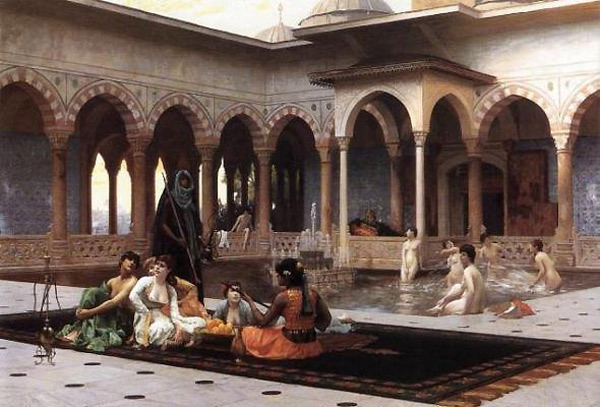
Slaves and eunuchs were also changed. The term “eunuch” in Greek means “guardian of the bed.” They were brought into the Harem to protect and maintain order. They were mostly chosen from black slaves.
There were two types of men allowed to be present in the Harem of Muslims. One type was the eunuch chosen from a young age, and their secondary sexual characteristics were completely removed. They had no beard, were short, and had a voice and gestures similar to women. Among the eunuchs were those who also reached the peak of fame and had great influence on the people. Loyal eunuchs were assigned to take care of mature concubines. Eunuchs in the Harem were also ranked.

The second type was eunuchs chosen at an older age. They were like ordinary men, had beards, facial hair, muscles, and also had sexual desires like other men. They served as guards but sometimes had to act as executioners to punish concubines, such as strangling them with silk – the mildest form of punishment. Concubines could also be punished by being placed in a bag and stoned to death, or having a terrified cat or a venomous snake put in the bag, which was then thrown into the river… They had to console themselves and suppress their desires as men with numerous beautiful women in the Harem. If they committed adultery, they would also be punished with one of these forms of punishment.
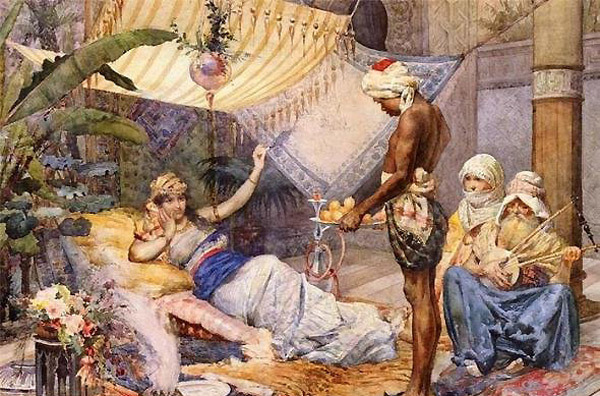
However, in 1909, after the abolition of slavery, when the Harem in Istanbul was opened, it was found that most slaves stayed in the palace. They could not imagine that there was another free life outside the doors. In the 19th century, the images of Odalik in the Turkish Harem were a favorite subject for European painters. They were often depicted as young and beautiful girls in half-naked poses, lying on a bed or performing belly dances before their masters.
The painter Jean Auguste Dominique Ingres had over 100 paintings with this theme. His paintings resembled a small Persian with colors reminiscent of the Eastern style.